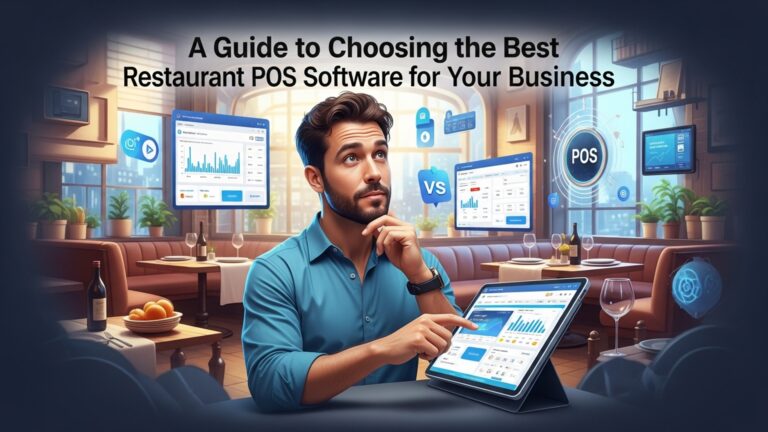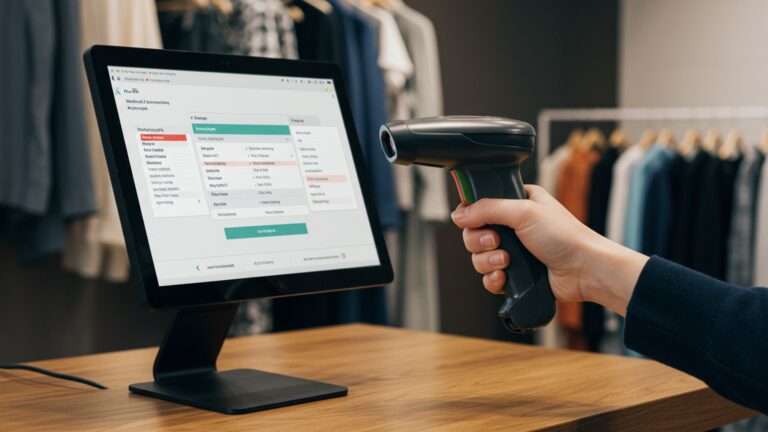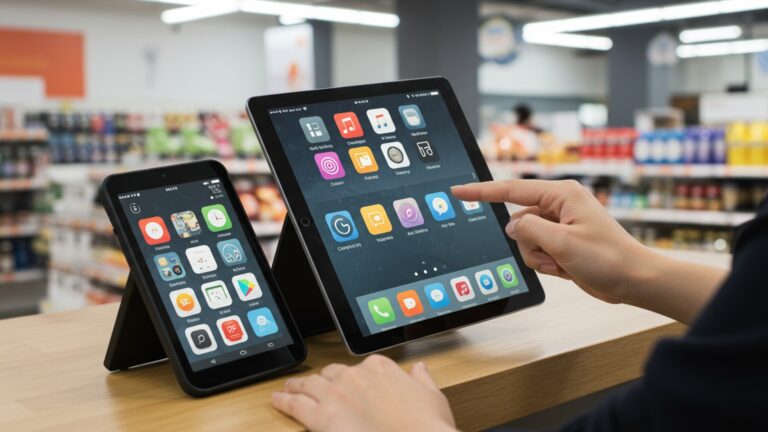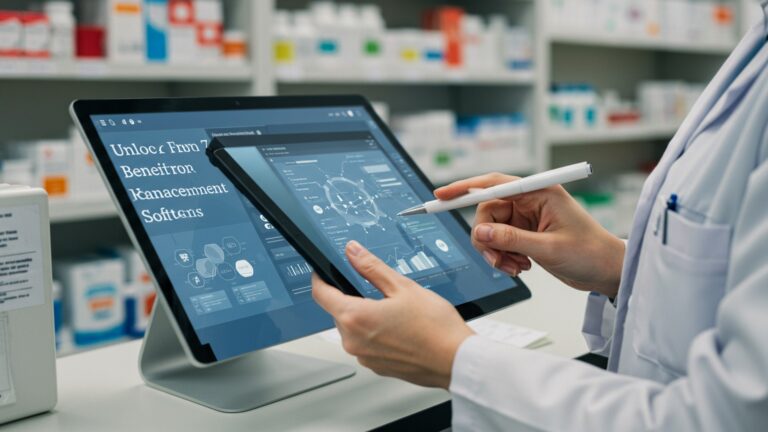Discover 7 Essential Features for Pharmacy POS Software Success Guide
In today’s rapidly evolving healthcare landscape, a pharmacy’s success hinges not just on dispensing but on integrated patient care and operational agility. The right POS software for pharmacy operations transcends basic transaction processing, becoming a critical nexus for managing complex inventory, from controlled substances to specialty medications, while simultaneously enhancing patient engagement. Modern solutions now integrate seamlessly with e-prescribing platforms and telehealth services, reflecting the shift towards digital-first healthcare. Beyond simply ringing up sales, advanced features empower pharmacies to implement adherence programs, screen for potential drug interactions in real-time. manage diverse payment models. This strategic tool transforms the point of sale into a comprehensive patient touchpoint, driving both efficiency and elevated care standards amidst current supply chain challenges and evolving regulatory demands.
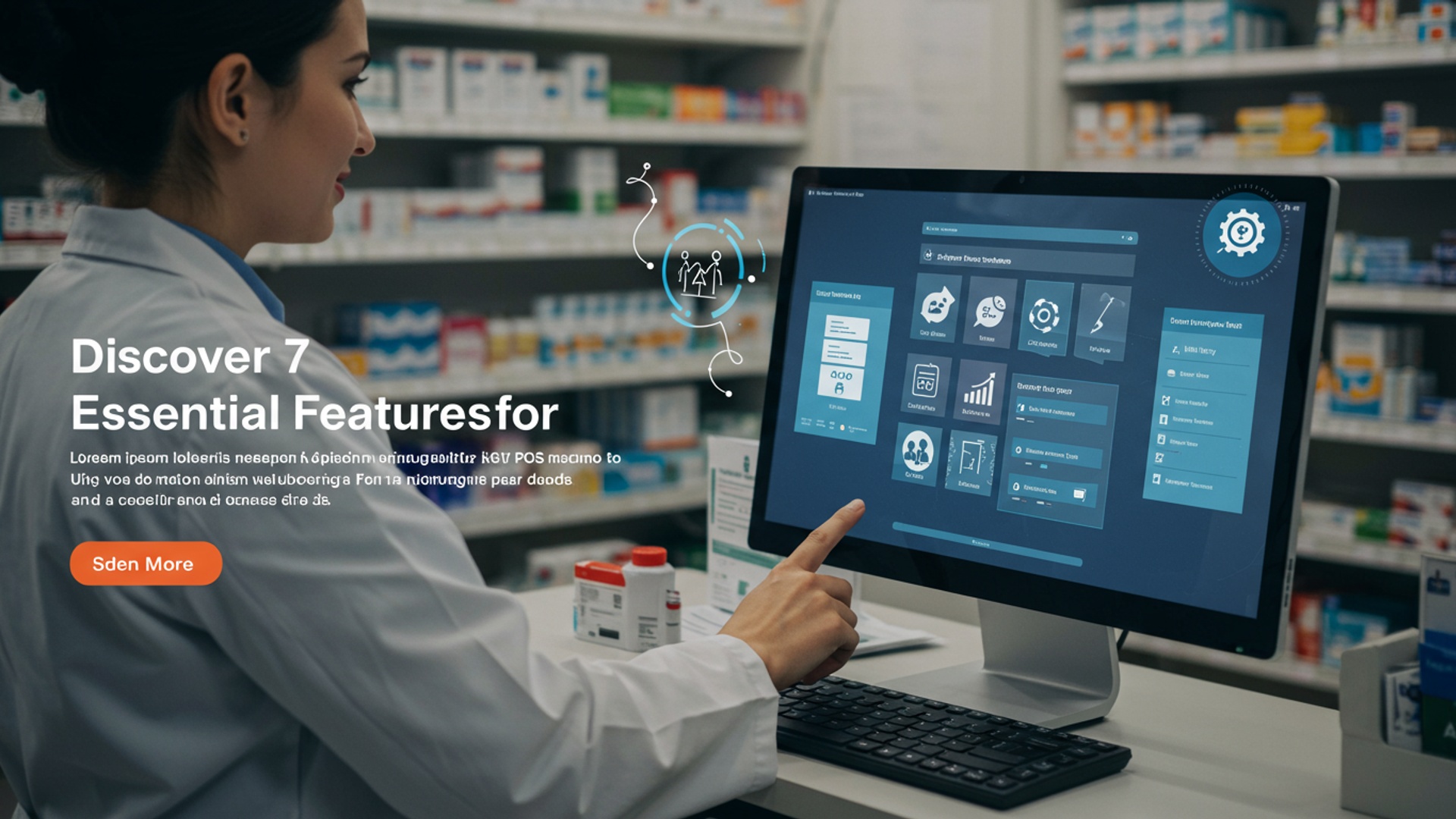
Seamless Prescription Management Integration
At the heart of any successful pharmacy operation lies the efficient and accurate handling of prescriptions. A top-tier POS software for pharmacy must offer robust integration with prescription management systems (PMS). This isn’t merely about ringing up a sale; it’s about connecting the entire patient journey from prescription receipt to medication dispensing. When we talk about integration, we’re referring to a unified system where the point-of-sale terminal can access and update critical prescription data in real-time.
Key functionalities include:
- E-Prescribing Workflow
- Refill Management
- Patient Medication History
- Insurance Verification
Direct receipt of electronic prescriptions from prescribers, reducing manual entry errors and speeding up the dispensing process. This minimizes the risk of misinterpretation of handwritten scripts.
Automated tracking of refill authorizations, allowing pharmacists to easily process refill requests, send reminders to patients. manage pending refills efficiently.
Instant access to a patient’s complete medication profile, including past prescriptions, dosages. dispensing dates. This is vital for counseling and identifying potential drug interactions.
Seamless integration with third-party payers to verify coverage, process claims. calculate co-pays directly at the point of sale.
For instance, imagine a scenario where a patient arrives to pick up a new prescription. With integrated POS software for pharmacy, the pharmacy technician can quickly pull up the patient’s record, verify the prescription status, check insurance eligibility. process the payment, all within a few clicks. This dramatically streamlines the workflow, reduces wait times. enhances patient satisfaction. Without this integration, pharmacies often grapple with disparate systems, leading to double data entry, increased errors. slower service.
Robust Inventory Control & Management
Effective inventory management is critical for a pharmacy’s profitability and its ability to serve patients. Expired medications, out-of-stock essentials, or overstocked slow-movers can significantly impact a pharmacy’s bottom line and reputation. A powerful POS software for pharmacy provides comprehensive tools to track, manage. optimize inventory from procurement to sale.
Essential features for inventory control include:
- Automated Reordering
- Expiry Date Tracking
- Perpetual Inventory
- Vendor Management
- Cycle Counting
Systems that can automatically generate purchase orders based on predefined par levels, sales history. vendor lead times, preventing stock-outs of critical medications.
Alerts and reports that highlight medications approaching their expiry dates, allowing pharmacists to take proactive measures like returning them to vendors or discounting them (where appropriate and legal).
Real-time updates of inventory levels with every sale and receipt, providing an accurate count of what’s on hand at any given moment.
Tracking vendor data, pricing. order history, enabling better negotiation and more efficient supply chain management.
Tools to facilitate periodic physical counts of specific inventory items, helping to identify discrepancies and maintain accuracy without a full store shutdown.
Consider a busy urban pharmacy. Without robust inventory features in their POS software for pharmacy, they might frequently run out of high-demand flu vaccines during peak season or have shelves full of over-the-counter products that rarely sell. A well-implemented system, But, can predict demand, optimize ordering. even suggest transfers between branches to balance stock, directly impacting cash flow and ensuring patients always have access to the medications they need.
Comprehensive Patient & Customer Relationship Management (CRM)
A pharmacy is more than just a retail outlet; it’s a vital healthcare provider. Building strong patient relationships is paramount for adherence, loyalty. improved health outcomes. A sophisticated POS software for pharmacy extends beyond transactional capabilities to incorporate robust Patient and Customer Relationship Management (CRM) tools, allowing for personalized care and communication.
Key CRM features often include:
- Detailed Patient Profiles
- Medication Adherence Tracking
- Personalized Communication
- Loyalty Programs
- Counseling Notes
Centralized records containing demographic insights, contact details, preferred communication methods, insurance data, medication allergies, chronic conditions. medication history.
Tools to monitor if patients are refilling prescriptions on time, identifying potential adherence issues. facilitating outreach programs.
Ability to send automated reminders for refills, immunization schedules, or health screenings via SMS, email, or automated calls.
Integration for managing customer loyalty points, discounts, or special offers, encouraging repeat business and rewarding patient engagement.
The ability for pharmacists to record notes from patient consultations directly within the profile, ensuring continuity of care.
For example, a patient with diabetes might benefit from automated reminders about their annual eye exam or flu shot. A well-integrated POS software for pharmacy allows the pharmacist to quickly access the patient’s history, note a new allergy reported during a consultation. ensure that all communication is tailored and timely. This level of personalized engagement not only enhances patient satisfaction but also supports better health management, reinforcing the pharmacy’s role as a trusted healthcare partner, all while maintaining strict
HIPAA
compliance for patient data privacy.
Advanced Reporting and Analytics Capabilities
To truly grasp and optimize a pharmacy’s performance, basic sales reports are simply not enough. A cutting-edge POS software for pharmacy provides in-depth reporting and analytics tools that transform raw data into actionable insights, empowering owners and managers to make informed strategic decisions.
Essential reporting features include:
- Sales Performance
- Inventory Turnover
- Prescription Volume & Mix
- Pharmacist Productivity
- Profitability Analysis
- Loss Prevention Reports
Detailed reports on sales by product, category, time of day, day of week. employee, helping to identify trends and peak periods.
Analysis of how quickly inventory is sold and replaced, crucial for optimizing stock levels and reducing carrying costs.
Reports on the number and type of prescriptions dispensed, including brand vs. generic, controlled substances. specific therapeutic classes.
Data on prescription fill rates and patient interactions per pharmacist, aiding in staffing optimization.
Gross and net profit margins by product, category. even individual prescriptions, revealing true revenue drivers.
Identifying potential areas of shrinkage or discrepancies through voided transactions, returns. inventory adjustments.
Consider a pharmacy owner trying to decide whether to invest more in a specific over-the-counter product line. Robust analytics from their POS software for pharmacy can show them the exact sales trends, profit margins. customer demographics for that category over the past year. This data-driven approach removes guesswork, allowing them to confidently allocate resources, optimize pricing. even tailor marketing efforts for maximum impact. A pharmacy might also use these reports to track the success of a new immunization program or to identify times when additional staff are needed at the front counter.
Secure and Diverse Payment Processing
In today’s digital age, patients expect a variety of secure and convenient payment options. A modern POS software for pharmacy must integrate seamlessly with diverse payment processing solutions, ensuring security and compliance with industry standards. Handling sensitive financial details requires top-tier security protocols to protect both the pharmacy and its customers.
Key features for payment processing include:
- EMV Compliance
Support for chip card transactions, which significantly reduce credit card fraud by encrypting data at the point of interaction.
EMV (Europay, MasterCard. Visa)
is a global standard for chip-based payment cards.
Acceptance of Near Field Communication (NFC) payments like Apple Pay, Google Pay. other tap-to-pay methods, offering speed and convenience.
Capability to process payments through dedicated pharmacy apps or third-party mobile payment platforms.
Proper handling of Flexible Spending Account (FSA) and Health Savings Account (HSA) cards for eligible medical expenses, often requiring specific item category recognition.
Adherence to the
Payment Card Industry Data Security Standard (PCI DSS)
, a set of security standards designed to ensure that all companies that process, store, or transmit credit card details maintain a secure environment.
Seamless processing of pharmacy-specific gift cards and loyalty reward redemptions.
Imagine a patient needing an urgent prescription but having forgotten their wallet. If the pharmacy’s POS software for pharmacy supports mobile payments, they can quickly pay with their smartphone, preventing a delay in receiving essential medication. Conversely, a system that lacks EMV compliance puts the pharmacy at greater risk of chargebacks and financial liability in the event of fraud. The integrity of financial transactions is not just about convenience; it’s about trust and protecting sensitive data.
Here’s a brief comparison of traditional vs. modern payment methods:
| Feature | Traditional (Magnetic Stripe) | Modern (EMV/Contactless) |
|---|---|---|
| Security | Lower (static data, easier to clone) | Higher (dynamic encryption, harder to clone) |
| Speed | Relatively fast swipe | Faster tap or chip insertion and PIN |
| Fraud Liability | Often on the merchant for EMV non-compliance | Often on the card issuer for EMV-compliant transactions |
| Convenience | Requires physical card | Physical card or mobile device |
| Technology | Older, less secure | Newer, more secure |
Regulatory Compliance & Audit Trail Features
Pharmacies operate within a heavily regulated environment, facing stringent requirements from federal, state. local authorities. Non-compliance can lead to hefty fines, license suspension. significant reputational damage. An effective POS software for pharmacy is designed with these regulatory challenges in mind, offering features that ensure adherence to legal requirements and facilitate audit processes.
Key compliance features include:
- Controlled Substance Tracking
Rigorous tracking of Schedule II-V medications, including dispensing limits, patient identification verification. integration with Prescription Drug Monitoring Programs (
PDMPs
) where mandated by state law. This helps combat opioid misuse and diversion.
Built-in safeguards and audit trails to protect Protected Health insights (
PHI
), ensuring patient privacy and data security in line with the Health Insurance Portability and Accountability Act.
Comprehensive records of all system activities, including user logins, prescription changes, inventory adjustments. transaction modifications. These logs are invaluable during regulatory audits.
Compliance with laws requiring tracking of sales of pseudoephedrine-containing products, often involving electronic logbooks and buyer ID verification.
Ability to quickly identify and contact patients who have received a recalled medication, ensuring public safety and compliance with FDA guidelines.
Imagine a state board of pharmacy conducting an audit. They might request detailed records of all controlled substances dispensed over a specific period, along with proof of patient identification and pharmacist verification. A robust POS software for pharmacy with integrated PDMP access and comprehensive audit trails can provide this insights instantly, demonstrating compliance and saving countless hours of manual data retrieval. Without these features, a pharmacy risks non-compliance, which can result in severe legal and financial repercussions, as highlighted by numerous cases of pharmacies facing penalties for inadequate controlled substance record-keeping.
Scalability and Multi-Location Management
For pharmacies with ambitions to grow or those already operating multiple branches, the ability of their POS software for pharmacy to scale and manage several locations efficiently is paramount. A system that can centralize operations, data. reporting across an expanding enterprise ensures consistency, reduces administrative overhead. supports strategic growth.
Essential features for scalability and multi-location management include:
- Centralized Database
- Remote Access & Management
- Unified Reporting
- Shared Inventory Pools
- Centralized Pricing & Promotions
- Role-Based User Permissions
A single, unified database that stores all patient, inventory. sales data for all locations, accessible from any branch. This ensures data consistency and eliminates redundancy.
Owners and managers can securely access and manage all aspects of their pharmacy operations from any location, facilitating oversight and decision-making.
Consolidated reports that provide an aggregated view of performance across all stores, as well as detailed breakdowns for individual locations, allowing for comparative analysis and identifying best practices.
The ability to view inventory levels across all stores, facilitating inter-store transfers to balance stock and fulfill patient needs more efficiently.
Managing pricing strategies, discounts. promotional campaigns from a central hub, ensuring consistency across the entire chain.
Granular control over user access, allowing administrators to define specific permissions for staff at each location, enhancing security and accountability.
Consider a growing pharmacy chain expanding from two to five locations. Without a scalable POS software for pharmacy, each new branch would operate as a silo, leading to inconsistent pricing, duplicated patient records. a fragmented view of the business. With a centralized system, But, a new employee in the fifth branch can access a patient’s complete history from the first branch, inventory can be optimally distributed. the owner can view real-time sales performance for the entire enterprise on a single dashboard. This streamlines operations, reduces errors. provides the strategic insights needed to manage a larger, more complex business effectively.
Conclusion
Selecting the right pharmacy POS is more than just checking off features; it’s about strategically transforming your operations and elevating patient care. Remember, robust inventory management, seamless prescription tracking. integrated patient data are no longer luxuries but absolute necessities in today’s dynamic digital health landscape. My personal tip: always involve your entire team, especially pharmacists and technicians, in the selection process and pilot testing. This ensures the chosen system genuinely supports their workflows, from managing controlled substances to facilitating personalized patient counseling, rather than creating new bottlenecks. The recent emphasis on data security and evolving privacy regulations, like HIPAA, makes a compliant and secure POS an indispensable asset. Don’t merely tick boxes; deeply interpret how the system safeguards sensitive patient insights. Embrace this technological leap; a well-chosen pharmacy POS isn’t just an expense. a vital investment that frees up your staff to focus on what truly matters: patient well-being and community health. Your pharmacy’s future success, marked by unparalleled efficiency and enhanced patient trust, truly begins with this smart decision today.
More Articles
A Complete Guide How to Select the Best POS Billing Software for Business
Learn How to Streamline Your Business With Billing and POS Software
How to Choose the Best Mobile POS Software for Your Business
Discover the 7 Best Pharmacy POS Software Solutions to Optimize Your Operations
FAQs
What’s this guide all about?
This guide dives into the absolute must-have features your pharmacy needs in its Point of Sale (POS) software to truly thrive and operate smoothly, covering the seven most critical functionalities for success.
Why should my pharmacy care about these specific POS software features?
Getting the right features in your POS system can make a huge difference, helping you manage inventory better, serve customers faster, stay compliant with regulations. ultimately boost your pharmacy’s overall success and profitability.
What kind of ‘essential features’ does it cover?
It covers key functionalities like robust inventory management, seamless prescription integration, efficient transaction processing, customer relationship management tools. features that help with regulatory compliance and reporting.
Is this guide more for new pharmacies or established ones?
Both! Whether you’re just starting out and need to pick the right system or you’re an existing pharmacy looking to upgrade, optimize, or assess your current setup, this guide offers valuable insights for making informed decisions.
How can these specific features actually help my pharmacy run better day-to-day?
These features are designed to streamline daily operations, reduce errors, save staff time, improve patient care through better data access. provide crucial insights that help you make smarter business decisions.
Will this guide help me choose the best POS system for my pharmacy?
While it doesn’t recommend specific brands, it equips you with the knowledge of what to look for in a top-tier POS system. This empowers you to ask the right questions and make an informed decision that perfectly fits your pharmacy’s unique needs.
What’s the biggest takeaway from reading this guide?
The main takeaway is understanding that a powerful POS system isn’t just for processing sales; it’s a strategic tool. With the right essential features, it can significantly contribute to your pharmacy’s efficiency, profitability, patient satisfaction. long-term growth.

